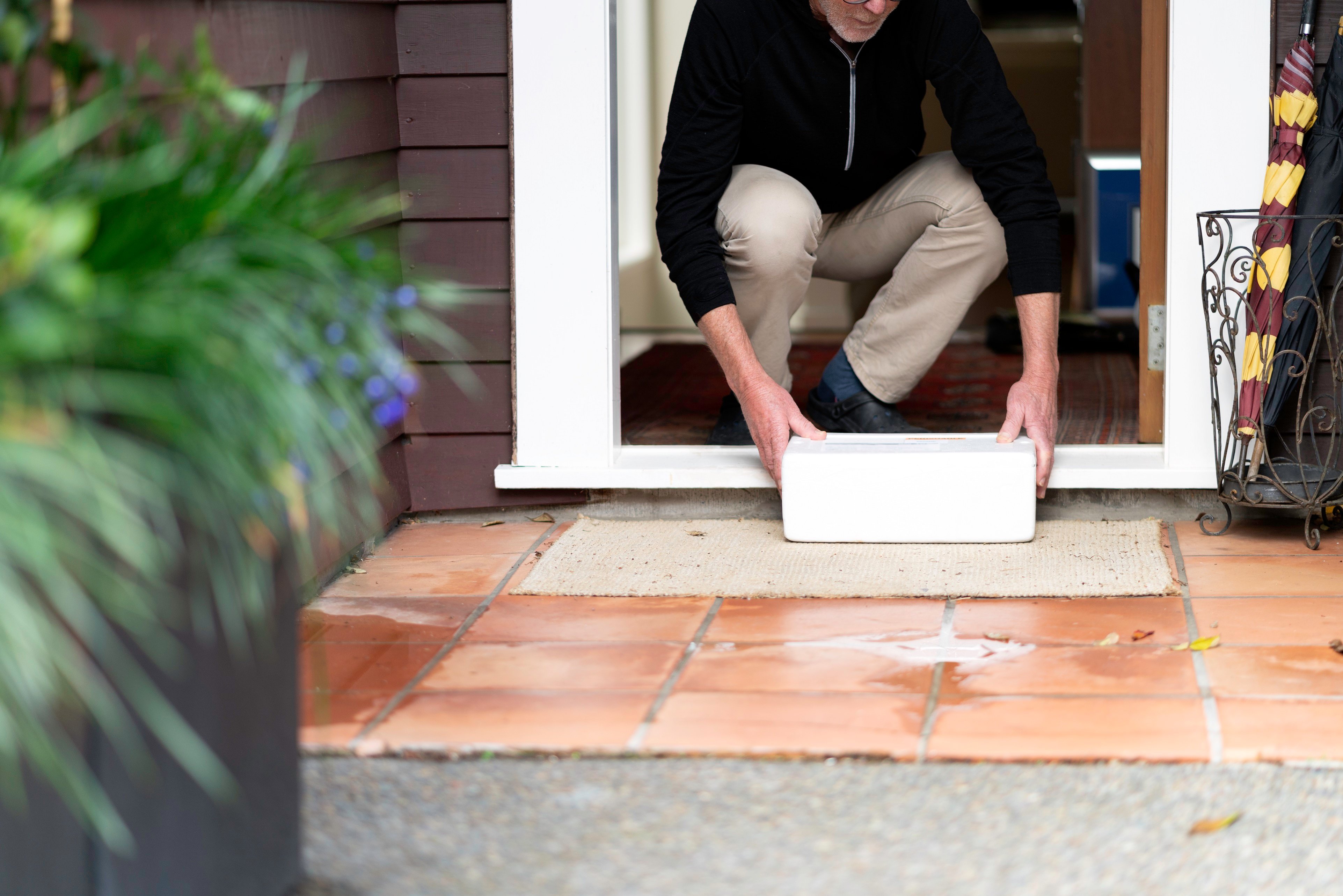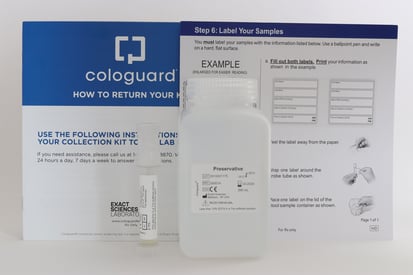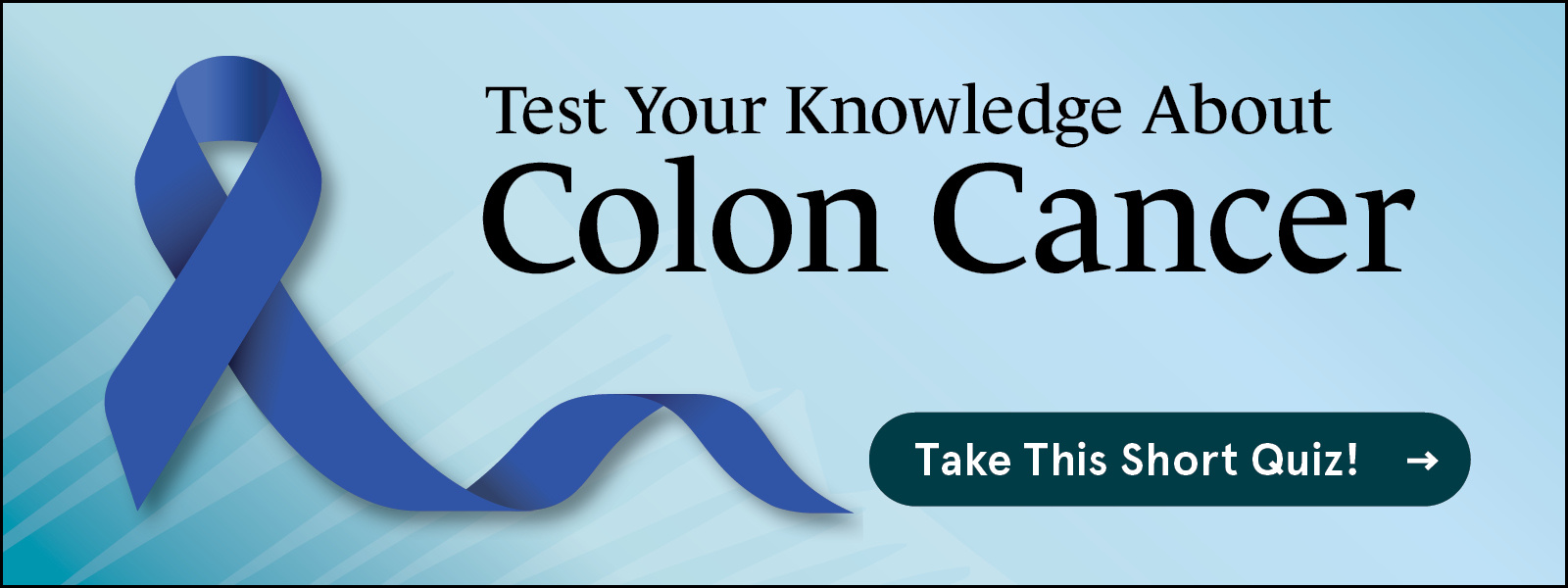What to Know About At-Home Colon Cancer Tests
6 min read

Author: Sujatha Nallapareddy, MD
Early detection is vital for colorectal cancer because the sooner it’s diagnosed, the better chance you can start treatment before the cancer grows and spreads to other parts of your body. According to the American Cancer Society, colorectal cancer is the third most common cancer diagnosed in the United States. While the best screening method for colon cancer is a colonoscopy, at-home colon cancer tests are increasingly available and, for some people, may seem to be an appealing alternative to a colonoscopy, a procedure that requires time and prep but, nevertheless, remains the most accurate screening for this serious disease.
What Is an At-Home Colon Cancer Test?
An at-home colon cancer test is a stool-based test you do in the privacy of your own home and send to a lab for testing. If an at-home test is positive, you will need to follow up with your healthcare provider for a colonoscopy.
There are different types of at-home tests, including:
- Guaiac-based fecal occult blood test (gFOBT) – This test uses a chemical called guaiac to detect blood in the stool. You have to complete this test once every year. You can get one from your healthcare provider or over the counter without a prescription. For a gFOBT, you collect stool samples from three bowel movements, which will be tested for occult blood. Occult means that the blood can’t be seen by the naked eye. However, the gFOBT can’t tell if the blood is coming from the colon, rectum, or other parts of the digestive tract, such as the stomach. Before taking a gFOBT, you must avoid red meat for three days, vitamin C over 250 milligrams daily for three to seven days, and nonsteroidal anti-inflammatory medications for seven days. According to the Colorectal Cancer Alliance, the gFOBT also requires multiple samples and has a high false-positive rate.
- Fecal immunochemical test (FIT) – A FIT is also required once every year. In this test, antibodies are used to detect blood in the stool. Unlike the gFOBT, medicine and food don’t interfere with the FIT. As a result, the FIT tends to give more accurate results, which can reduce the number of times these tests need to be repeated. You can get this test from your healthcare provider.
 FIT-DNA test – The FIT-DNA is also called the stool DNA test. This test combines FIT with a test that checks for altered DNA in the stool. This test can be completed every three years. Cologuard is an example of the FIT-DNA test, which has an accuracy of 92% in detecting colon cancer overall. The FIT-DNA test is available with a prescription only.
FIT-DNA test – The FIT-DNA is also called the stool DNA test. This test combines FIT with a test that checks for altered DNA in the stool. This test can be completed every three years. Cologuard is an example of the FIT-DNA test, which has an accuracy of 92% in detecting colon cancer overall. The FIT-DNA test is available with a prescription only.
Advantages of At-Home Colon Cancer Tests
“Some patients do not want to get started with a colonoscopy due to the preparation or cost,” said Dr. Sujatha Nallapareddy, medical oncologist and hematologist at Rocky Mountain Cancer Centers (RMCC). “Also, sometimes their insurance might not allow them to start colonoscopies. The guideline used to be 50 years of age for screening. But now the recommended age is 45. Not all insurances have accepted that.”
At-home tests are also noninvasive. Most at-home tests require you to collect a stool sample and send it to a lab without any prep work. gFOBT, which requires that you follow a particular diet and avoid certain medications for three to seven days before taking the test, is the only at-home test that requires changes to diet beforehand.
Most insurance plans cover at-home colon cancer tests. However, you should check with your insurance provider to see if your plan covers them.
“At-home tests can be helpful in some situations because we are seeing more and more young colorectal cancer incidents,” Dr. Nallapareddy said. “At-home tests can help us get the screening process started, but we don’t completely rely on them as there are some disadvantages to at-home tests.”
Disadvantages of At-Home Testing for Colorectal Cancer
At-home colon cancer tests are not 100% accurate and, as a result, may give you false positives or negatives.
“There is a 10% to 15% chance you might see false positives,” Dr. Nallapareddy said. “If you have a positive test, then you need to make sure you follow that up with a colonoscopy. If you just do the test and it’s positive or if you don’t do any additional follow-up on that test, then it’s not really worth doing.”
At-home tests cannot check for colon polyps, which can be cancerous, so you may receive a false negative.
“Sometimes you may have symptoms and these tests come back negative,” Dr. Nallapareddy said. “If you have symptoms, you can start with an at-home test, but you need additional follow-ups.”
Another disadvantage of at-home tests is how often you must complete screenings. The gFOBT and FIT tests are required yearly, and the FIT-DNA test is required once every three years. Meanwhile, a colonoscopy is needed once every 10 years for people with an average risk.
You might also like to read: Colonoscopies: If Mark Can Do It, So Can You.
Signs and Symptoms Colorectal Cancer
Early stages of colorectal cancer may not cause many signs or symptoms. However, if you experience any of these symptoms, don’t ignore them:
 Abdominal pain or aches that don’t go away
Abdominal pain or aches that don’t go away- Bleeding from the rectum, which may look like bright red blood
- Blood in the stool, which may make the stool look dark in color or black
- Changes in bowel habits or bowel movements, such as a narrowing of the stool
- Cramping
- Diarrhea or constipation
- Fatigue
- Persistent feeling of having a bowel movement
- Unexplained weight loss
- Weakness
Colorectal cancer may spread to the liver, which can cause an enlargement of the liver or yellowing in the skin or eyes, a condition called jaundice. If colorectal cancer spreads to the lungs, it can cause difficulty breathing.
If you have signs or symptoms of colorectal cancer but receive a negative from an at-home test, follow up with a healthcare provider because you may need colonoscopy screening.
Related Read: 5 Common Signs of Colon Cancer That Are Easy to Overlook.
Risk Factors for Colorectal Cancer
There are certain risks for colorectal cancer that are out of your control. These risks include your age and having a family history of colorectal cancer, certain genetic conditions, or inflammatory bowel disease.
Some risks are lifestyle factors you can control. They include:
- Being overweight or obese
- Drinking alcohol
- Eating a diet low in fruits and vegetables and high in processed meats
- Low physical activity
- Smoking
You can decrease your risk for colorectal cancer by getting enough exercise, avoiding alcohol and tobacco, and eating a diet high in fiber and low in processed meats. The current exercise recommendations from the American Heart Association are 150 minutes of moderate-intensity aerobic activity per week, 75 minutes of vigorous-intensity aerobic activity per week, or a combination of the two.
You might also like to read: How Your Diet Can Impact Your Risk of Developing Colon Cancer.
Colorectal Cancer Screening Guidelines
If you are at average risk, you should begin colorectal cancer screening at age 45 and continue until age 75, according to the American Cancer Society. After age 75, screening recommendations depend on a few factors, such as comorbidities or personal preference.
If you are at a higher risk, you may need to begin screening sooner and more often. You are at a higher risk if you:
- Have a family history of specific syndromes, such as Lynch syndrome or familial adenomatous polyposis
- Have a history of inflammatory bowel disease
- Have a strong family or personal history of colorectal cancer
- Have had certain polyps detected and removed during a colonoscopy
- Have had radiation to your stomach or pelvis
Before taking an at-home test, discuss with your healthcare provider which test may be right for you. Whether you receive a positive or negative result, follow up with your healthcare provider.
